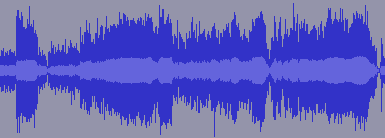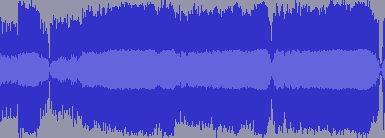A Plea to Pastors: Compress Your Sermon Recordings
Podcast sermons are a thing now, and people listen to you preach on their morning commutes. How neat is that?
Let me tell you what is less neat. Because pastors can go from yelling at the top of their voices to whispering the next moment, this translates into podcasts that are nearly unlistenable on the road. This results in the unfortunate solution I often resort to--turning up the volume on my phone to 100% so that I can hear the whispers. The problem is that this then makes the louder parts incredibly distorted and hard to understand.
Luckily, there's a really simple solution, and you can do it for free. It's called audio compression. If you've ever seen an audio file, it looks something like this:
You don't need to understand why it looks like that, but what I want you to take away is how that blue line is sometimes really wide and sometimes really skinny. The wide parts are when the preacher is yelling and the skinny parts are when he's whispering. An audio file like this translates into frustrated podcast listeners. However, once we compress it (more on how in a second), it looks like this:
Same file, but much more uniform. Again, the takeaway: happy podcast listeners can hear every word.
How is this magic possible?
Simple, and you don't even need to pay for fancy software and an expert to run it. Go download Audacity audio editor and enable mp3 exporting. Now open up your file and follow these seven easy steps:
- Select the entire segment of audio. Just press ctrl+a (or cmd+a if you're on a mac).
- Click on "Effect->Compressor..." in the menu at the top.
- Check to make sure "Ratio" is set at 3:1. This should be about right for your needs.
- Click "OK."
- Once it finishes compressing your audio, the blue line should look a lot fatter and more uniform.
- Click on "File->Export..." and set a name for your file, and make sure that "Save as Type" is set to mp3.
- Upload the completed file to your website! Now people will be able to hear your sermons all the way through. How neat is that? Trust me, it's pretty neat.

